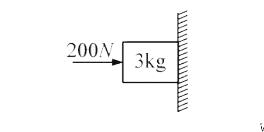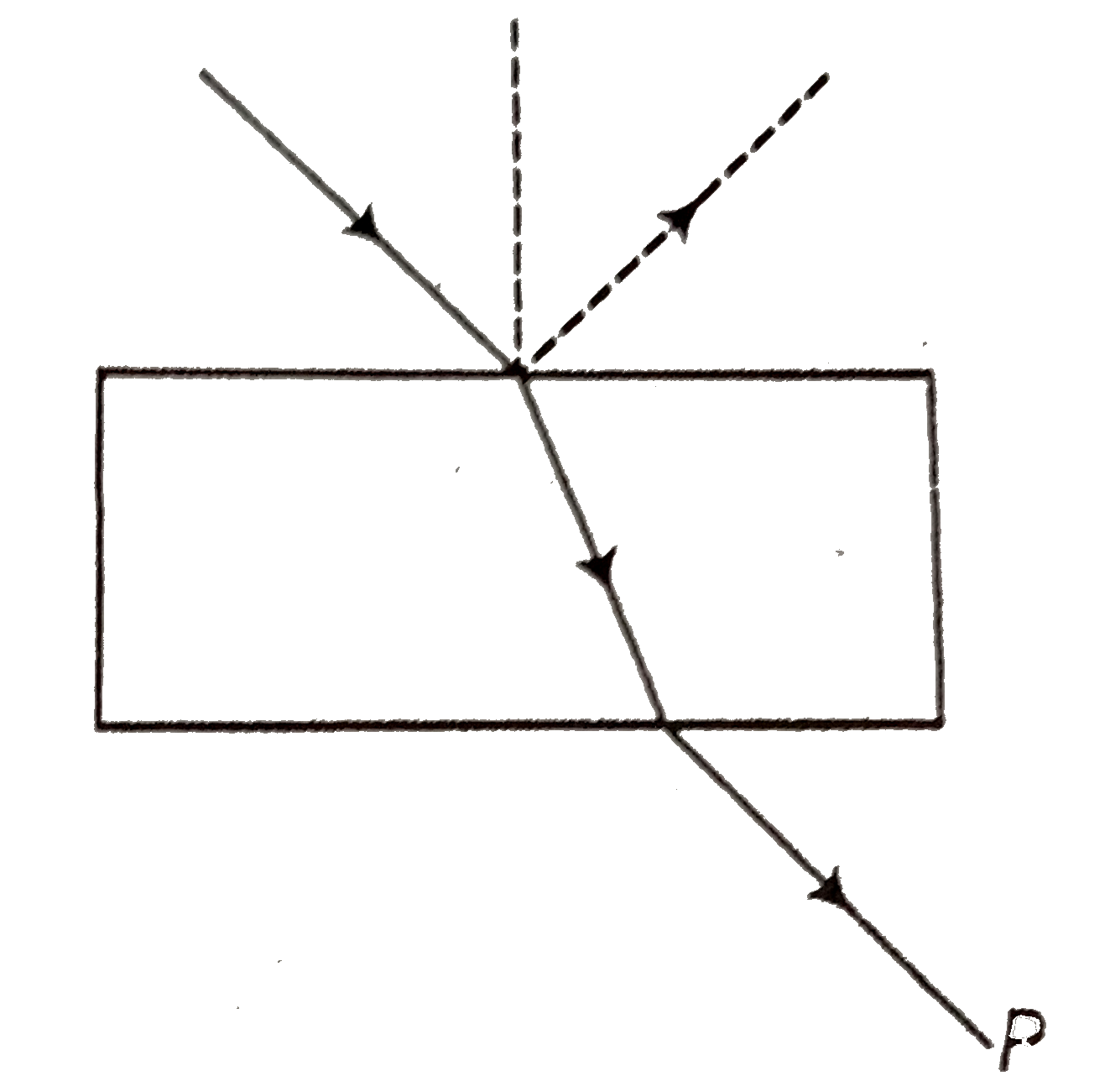
A source of light of power P is shown in Fig. 3.6. Find the force on the block placed in the path of the light rays. The surface of body on which the light beam is incident is having a reflection coefficient ar=0.7 and absorption coefficient aa=0.3.

In this case 70% of the incident photons are reflected back and 30% are absorbed by the body. Thus, the photon which is absorbed will impart a momentum hλ to the body and the photon which is reflected will impart the change in momentum 2hλ to the body. Thus, the net force acting on body can be given as
F=0.7Pλhc×2hλ+0.3Pλhc×hλ
F=1.7Pc
Topper's Solved these Questions
- PHOTOELECTRIC EFFECTBOOK - CENGAGE PHYSICS ENGLISHCHAPTER - PHOTOELECTRIC EFFECTEXERCISE - Examples
8 Videos
- PHOTOELECTRIC EFFECTBOOK - CENGAGE PHYSICS ENGLISHCHAPTER - PHOTOELECTRIC EFFECTEXERCISE - Exercise 3.1
15 Videos
- NUCLEAR PHYSICSBOOK - CENGAGE PHYSICS ENGLISHCHAPTER - NUCLEAR PHYSICSEXERCISE - ddp.5.5
14 Videos
- RAY OPTICSBOOK - CENGAGE PHYSICS ENGLISHCHAPTER - RAY OPTICSEXERCISE - DPP 1.6
12 Videos
Similar Questions
If the absorption coefficient and reflection coefficient of a surface of a body are 0.4 and 0.6 respectively then:-
View SolutionA light ray is incident at an angle of 45∘ with the normal to a √2 cm thick plate(μ=2.0). Find the shift in the path of the light as it emerges out from the plate.
View SolutionA point source of light is placed at a distance hbelow the surface of a large deep lake.What is the percentage of light energy that escapes directly form the water surface if μof the water=4/3?(neglet partial reflection)
View SolutionA force of 200N is applied as shown in the figure on block of 3 kg. The coefficient of friction between the block and the wall is 0.3. Find the friction acting on the block. (in N) {Take g = 10 m/s2

View SolutionA ray of light is falling on a glass sphere of μ=√3 such that the incident ray and the emergent ray, when produced, intersect at a point on the surface of the sphere. Find the value of angle of incidence.
View SolutionA light ray is incident normally on the face AB of a right-angled prism ABC(μ==1.50) as shown in figure. What is the largest angle ϕ for which the light ray is totally reflected at the surface AC ?

View SolutionConsider a light beam incident from air to a glass slab at Brewster's angle as shown in figure.
A polaroid is placed in the path of the emergent ray at point P and rotated about an axis passing through the centre and pependicular to the plane of the polaroid.

View SolutionA cubical block of glass of refractive index n1 is in contact with the surface of water of refractive index n2. A beam of light is incident on vertical face of the block. After refraction a total internal reflection at the base and refraction at the opposite face take place. The ray emerges at angle θ as shown. The value of θ is given by

View SolutionA beam of light from the point A(3,10) reflects from the line 2x+y−6=0 and then passes through the point B(5, 6).The equation of reflected beam is :
View SolutionA beam of light from the point A(3,10) reflects from the line 2x+y−6=0 and then passes through the point B(5, 6).The equation of reflected beam is :
View Solution
